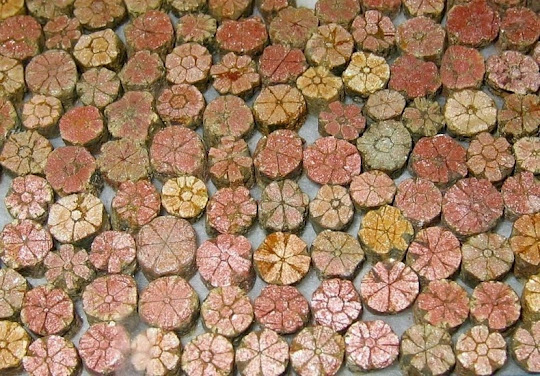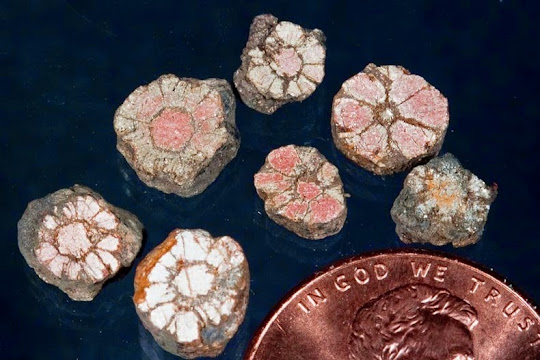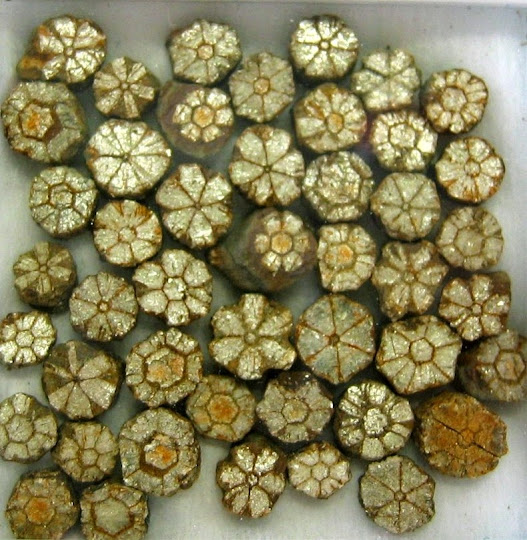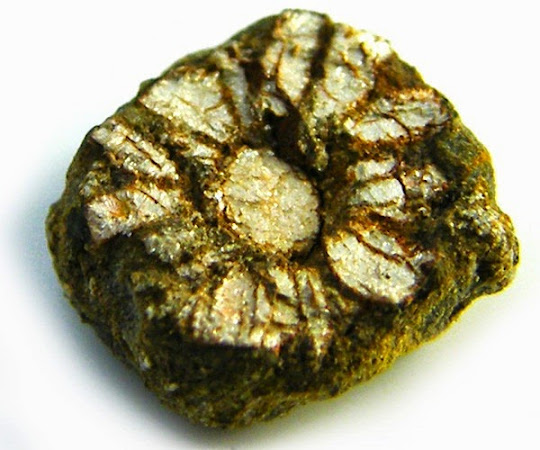“These flower patterns weren’t always made of mica,” explains Science Alert. “They started their existence as a complex matrix of six prism-shaped crystal deposits of a magnesium-iron-aluminium composite called cordierite, radiating out from a single dumbbell-shaped crystal made from a magnesium-aluminium-silicate composite called indialite in the centre.”

Cherry blossom stones are hosted in a matrix of hornfels, a fine-grained, contact metamorphic rock formed underground around 100 million years ago by the intense heat of molten lava. The subhexagonal-shaped masses of cordierite-indialite in the hornfels consist of seven individual crystals. At the center of each mass is a dumbbell-shaped indialite crystal - very narrow at the center, and relatively wide at the ends. Surrounding the indialite crystal are six prism-shaped cordierite crystals. They are widest at the center of each cherry blossom stone and narrowest at the ends.
The cordierite-indialite masses underwent a second metamorphic event when they were exposed to a type of hot water called hydrothermal fluids. These fluids altered the chemical composition of minerals inside the cherry blossom stones, causing mica to replace the original cordierite-indialite inclusion.
Because they have to undergo two intense and very specific types of metamorphosis in order to form, cherry blossom stones are incredibly rare, and found only in central Japan.
Cherry blossom stones that underwent a complete replacement of their internal minerals during their geological lifetime are so delicate inside that they can easily be snapped in half or crushed between one’s fingers. In order to preserve the beauty of their delicate mica patterns, the Japanese locals coat them in a diluted solution of wood glue mixed with water to keep everything in place.



Source
